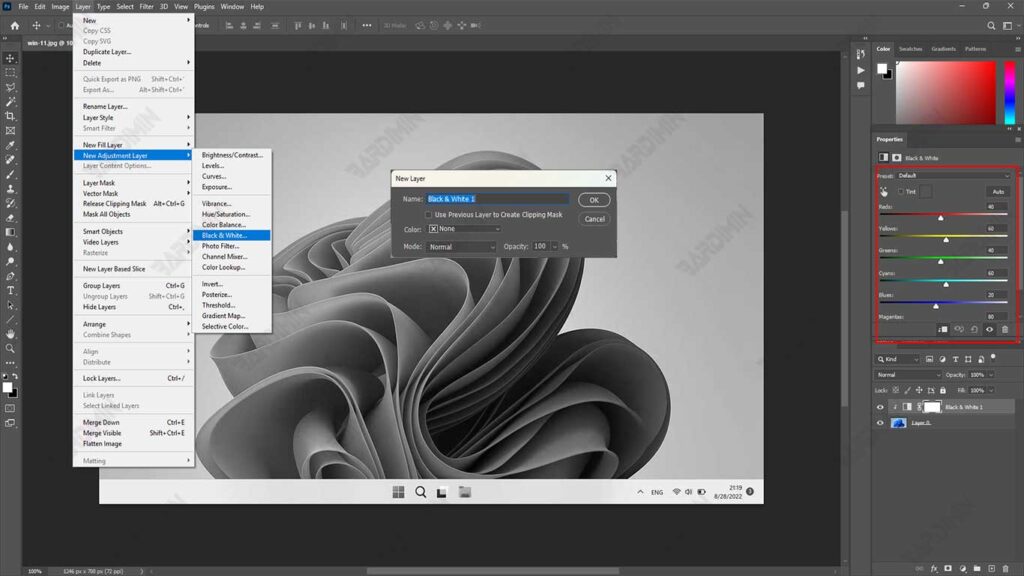In the digital age full of vibrant colors and attractive visual effects, black-and-white photo conversion still has strong appeal. Although technology continues to evolve, black-and-white photos remain relevant due to their high artistic value and ability to convey deep emotions.
Without color interference, black-and-white photos can highlight important elements such as texture, shape, and composition, making them suitable for a wide range of photography types, from intimate portraits to dramatic landscapes to story-rich street photography.
One of the best tools to turn photos into black and white is Photoshop. With the flexibility and control it offers, Photoshop allows photographers and editors to customize the conversion process as needed.
From simple methods like grayscale and desaturation to more advanced techniques like Gradient Map, Channel Mixer, and Black & White Adjustment, Photoshop offers a wide range of options for producing accurate and high-quality results. In this article, we will discuss the various methods and how you can use them to create stunning black-and-white photos.

1. Changing Images to Greyscale
Greyscale is an image mode that removes all colors, leaving only shades of black, white, and gray. This is the most basic way to turn a colored image into black and white. Although it looks simple, this method often results in images that appear flat and less attractive due to the lack of tonal variation.
The greyscale method removes all color information directly, without giving control over how the tonality of the original color is converted to the grayscale. This often causes the image to lose contrast and details that would have stood out more if it had used more advanced conversion methods. As a result, the image looks “flat” because its tonality tends to be linear without rich variation.
Although the results are limited, the greyscale method is still useful in some situations:
- If you want to convert an image to Duotone (a black and white image with two colors), grayscale is the first step necessary.
- If you just need a quick conversion without detailed controls, greyscale could be a great choice.
Steps to Change Image to Greyscale
- Open the color image you want to turn black and white in Photoshop.
- Select Image > Mode > Grayscale. On the main menu, select Image, then Mode, and select Grayscale.
- Photoshop will prompt you to confirm the deletion of the color information. Click Discard to continue.
- Once you’re done, you’ll get a black-and-white image with a flat, less attractive tonality.
If you want more interesting results, try other methods such as Desaturasi, Gradient Map, or Channel Mixer for better control.
2. Desaturasi: How to Quickly Remove Color
Desaturasi is a technique that reduces the intensity of colors to zero so that the image becomes black and white without erasing all color information. This method is more flexible than Grayscale, as it preserves details in shadows and highlights.
Difference between Grayscale and Desaturation
- Grayscale removes all color information and converts the image to black and white permanently.
- Desaturasi only reduces the intensity of the colors, but remains in the original color mode (RGB or CMYK), allowing for further editing.
- The result of desaturation often looks brighter than grayscale because it still retains the light distribution of the original color.
While the desaturation process is quick and easy, there are some drawbacks to be aware of. First, this method does not provide full control over the color balance in black-and-white images. Second, some colors may appear lighter or darker after desaturation, which can make the final result less satisfying.
Finally, desaturation is less flexible for further adjustment when compared to methods such as Black & White Adjustment Layer or Channel Mixer.

